
When most people think of truffle hunting, they picture people following a sturdy pig into the woods. Few realize that dogs are now the chosen truffle hunters around the world. Truffle dogs? Yup! Dogs are more effective at hunting this “black gold” ingredient. There’s even a canine bred specifically to seek out these prize fungi: the Lagotto Romagnolo. With a little training, though, any dog has the potential to become a truffle dog.
But First, What Are Truffles?
Truffles are edible fungi that grow deep underground. They form a symbiotic relationship with trees. While almost any tree can share in this relationship, the most common families include:
- Douglas fir
- Hazelnut
- Oak
- Pine
- Willow
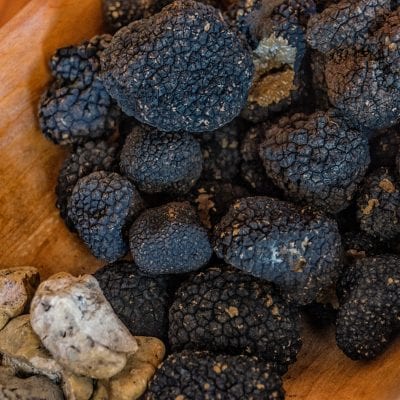
As a truffle matures, it releases odors to signal to wildlife that they’re ripe. This is how truffles disperse their spores to reproduce. That strong odor is key to the truffle-hunting process. The smell is similar to the pheromones released by a male pig. This is why female pigs were originally used for hunting truffles. So why did they stop?
The Decline of the Truffle Pig
Truffles are DELICIOUS. Prized in the culinary world along with caviar and saffron, these fungi are sought after, rare, and some of the most expensive ingredients in the world. European white truffles sell for $3,600 a pound! If your pig eats the truffle before you get there. they sell for nothing. And pigs love truffles about as much as we do.
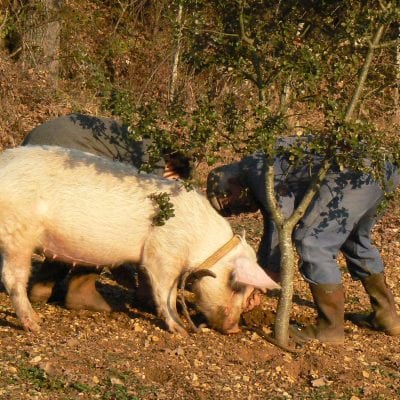
Those cash rewards mean competition. People seeking truffles guard their search regions zealously. And pigs aren’t small animals. Driving around with a 400-pound pig in your car? Kind of suspicious. Putting that pig on a dog leash? Even more suspicious. Now try to imagine wrestling 400 pounds of pig AWAY from a yummy truffle. No wonder people switched to truffle dogs. (Bonus: dogs DON’T eat truffles!)
Enter: Truffle Dogs
The Lagotto Romagnolo (pronounced “La-go-toh Roman-yolo”) originated in Renaissance Italy as a waterfowl retriever. They have tight, curly hair that’s waterproof (and super cute). However, when the Italian marshes were drained, it looked like these working dogs were out of a job. Good thing they have exceptionally sharp senses of smell!
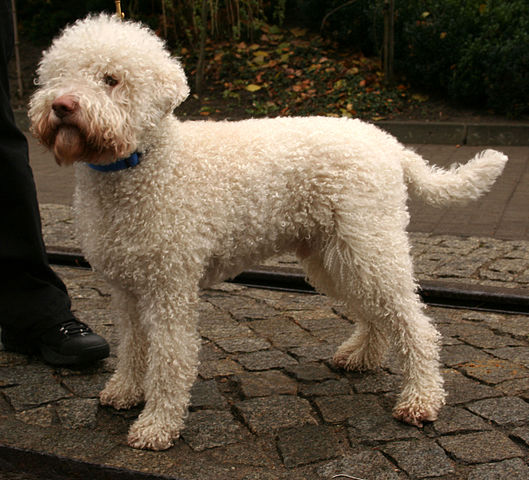
Lagottos’ noses make them perfect search dogs. Eager to please, they’re also easy to train. They quickly became truffle hunters, and they’re now regarded as Italian Truffle Dogs. That thick coat keeps them warm in autumn and winter (different truffles mature at different times). It also protects them from thorns and branches in the forest. They have a natural tendency to dig so that they can reach the buried fungi. They were created for truffle hunting!
Other Truffle Dog Breeds
Truffles promise lucrative rewards, but Lagottos aren’t well-known in the canine world. What’s a truffle hunter to do? Hunt with another dog, of course. That’s right, other breeds are also known for their skill in tracking down the elusive fungi.
- Beagles have long muzzles with 220 MILLION scent receptors (humans only have 5 million). For trainers able to keep their Beagle focused, they’re perfect.
- Belgian Malinois are usually guard dogs. However, one Malinois found a cultivated Black Perignon truffle. That was supposed to be impossible!
- Poodles can scent truffles from 100 yards away. They have the same protective curly coat as Lagottos.
With proper training, any dog has the potential to become the next great truffle hunter.
Truffle Dog Training
Numerous organizations are willing to help train dogs in the noble profession of hunting down “black gold.”
They look for qualities like drive, endurance, curiosity, food-motivation, and (of course) a strong nose. Sound like your dog? Then scent-training could be for them.
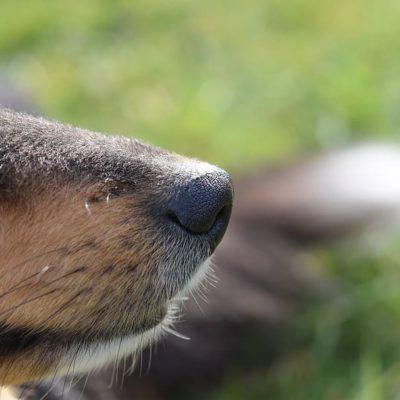
Breeders start training early: placing truffle oil on the mother’s belly to familiarize puppies with the scent. It also creates a positive association (Mom equals truffles). As puppies age, different enrichment activities follow. For instance, they fetch toys containing truffles. Later, the toys are buried. The games keep the training fun.
The Clicker Method of Training Truffle Dogs
For dogs new to truffle hunting, clicker training is the best method.
- Give your dog a truffle to sniff. At the same time, click.
- Reward your dog with a treat. You’re creating a positive association between the scent and the click.
- As he advances, add the word “truffle” when you click. Your dog learns “truffle” means treat.
- Once he understands, hide the truffle in a toy for him to find. When he does, click and reward.
- Now bury the toy for him to find. Click and reward.
Advanced classes teach dogs to develop alerts: barking, sitting, or gentle digging. They use the same clicker method. Once the dogs have that routine, trainers introduce distractions. After all, truffles are found in the forest. There are wild animals, other smells, and the sound of gunshots (depending on the season).
This training is just as important for you, the handler. Try to look for a local nose work class. They’re a great place to start on your dream toward truffle hunting. It’ll also confirm whether your dog is compatible with the work of hunting such elusive fungi.
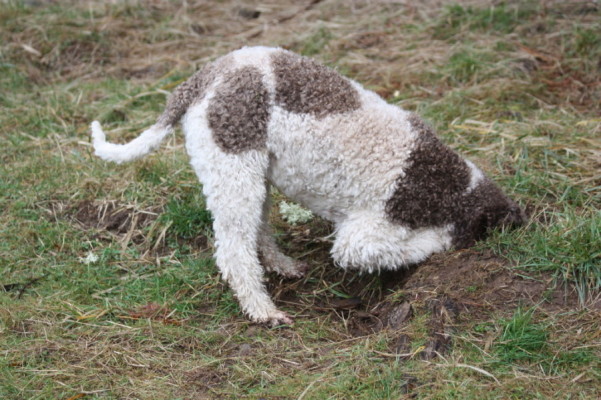
It turns out, not every dog is up to the task. Some breeds have natural handicaps. For instance, Terriers and Hounds are prone to distraction, especially by other animals. Sighthounds don’t keep their noses on the ground, and truffles live at the base of trees. Does that mean your dog is out? Not necessarily — just keep those factors in mind.
The Truffle Craze
Truffle farms exist, but culinary demand exceeds supply. Meanwhile, the supply of truffle dogs is low.
If you think this enterprise might be worth pursuing, consider visiting the Oregon Truffle Festival in January. They hold a truffle dog seminar as part of the festival. Even better, Joriad is their annual truffle dog competition – the highlight of the festival and open to anyone.
You may not rake in enough truffles for early retirement. But there are over 350 truffle varieties in the Pacific Northwest alone. That’s a lot of opportunity for entertainment, for you and your new truffle dog!




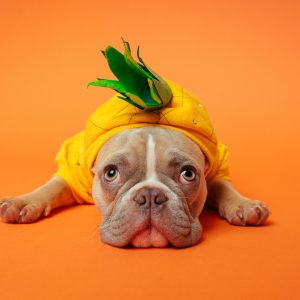








No comment yet, add your voice below!